-
Posts
611 -
Joined
-
Last visited
-
Days Won
33
Content Type
Profiles
Forums
Events
Articles
Dining Guide
Posts posted by Poivrot Farci
-
-
After dinner here last night, I guess I know why no one goes here any more.
I do. I enjoy the people, the space and the food.
I'd gladly walk 3 miles in flip flops to have the anchovy-stuffed zucchini blossoms and the tender lamb "flesh and bones" glazed with sweet green tomato mostarda, which were very satisfying. For the price of what was 3-4 courses I can relax over a few more with my tablemates and am content with good products and sound cooking which tastes good, rather than what needlessly tries to be a contrived revelation.
-
 3
3
-
-
Recently we have gotten into the cocktail at 5pm habit, and I forgot and mixed up some for her using vodka (almost all of which is made from wheat these days) and there was no problem. I'm not suggesting anyone with celiac should try these things with abandon, but for her they work.
Distilled spirits have never, and will never ever contain gluten. Gluten is not volatile.
Advantage Vetri, and placebos.
-
It is silly to assume the false premise that anyone would ever be guaranteed a hopelessly broad "good meal" in France at any point in history, based on a few trips. There has always been crap and cheats there and very few would deny it. The more recent amounts of it seem to have emigrated from the business end of the western Atlantic.
Mr Bittman's cherry picked tourist's exceptions make up the cursory $2.99 panic buffet headlines I greedily chow down on the Huffington Post. He might consider going even an hour beyond the capital's city limits and judge the gustatory merits of rural and elsewhere France alongside his narrow sample of restaurants to see how much French food can still get it up. Maybe he should drive the length of Averyron and then any US county of 250,000 to compare field notes of markets, restaurants, sundries and wares available to any derring-do diner on and off the highway. In this day of age it is reasonable to do some research to find a better product and while industrialized convenience food has chipped away at the stalwart goods & shops of Waverly Root's yesteryear, the finer stuff is available to anyone who gives a damn, spends more than a week there and takes the effort to find it. And yes, the frozen food there still isn't bad at all.
-
 1
1
-
-
Snakehead pie. $16 (at Eat the Rich on Fridays and Saturdays)
Smoked, in savory pastry, with pickles and mushroom catsup.
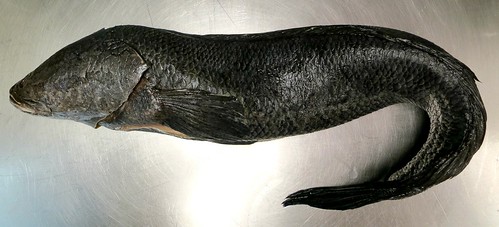
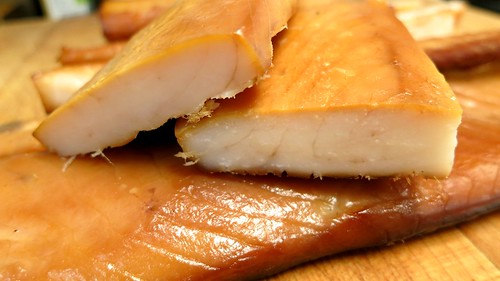
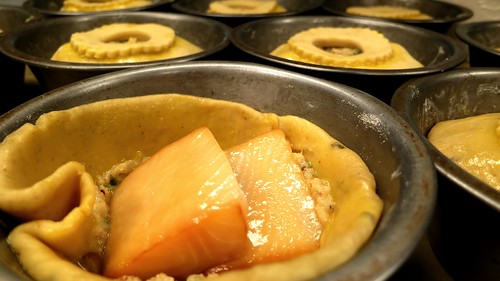

-
 6
6
-
-
- Popular Post
- Popular Post
Thank you Frank. And to the stranger at Tonic in Mt. Pleasant who, in January of 2006, upon overhearing my conversation of where to work next, kindly urged, without hesitation, "go to Palena. It's the best place in the city."
I just re-read the first 10 pages of the Palena thread and with the exception of the Pojarski detractor (a dish you will have trouble finding anywhere else, in this century, and is representative of Frank's scorchingly low heat classical repertoire) and grumbles of service, long waits for a table (for a damn burger) and other bullshit white whines there was near universal and effuse praise for the food, on a weekly basis. We all misfire from time to time but on Frank's watch those fumbles were rare exceptions.
Frank's tenet #1. Anything worth fucking up once is worth fucking up twice.
Jonathan and I (Logan, Brian, Sarah, Carl (now CdC at Craigie on Main)) and quite a few more are fortunate to have fallen through that door to culinary Narnia and been able to work at Palena. After 8 years cooking for grand fromages Laurent Manrique, Charlie Palmer, Gerry Hayden, Buben, Cathal and Bryan Voltaggio I thought I knew a bit, as most young-ish cocky cooks are wont to do, but all the while we were playing brash checkers to Frank's brass chess. We unlearned some clumsy, bastardized -though standard- practices and were exposed to an entirely new reality of deliberate discipline, finesse, proper technique, sound theory, resourcefulness, professionalism, practicality, humility, layering of flavors and elegant compositions that highlighted traditional techniques of yesteryear, seasonality, regions and well established combinations that made sense and had exceptional flavor. Never anything that was purposely random or conceived because of the pervasive "it sounds cool" variety of insecure ideas. Decadent, but no gimmicks. Nothing left out in the sun to softly spoil and call it our own clever sleight of hand. We learned to make everything that was worth the while.
Tenet #2: Anything worth doing is worth doing right.
We were treated to premium, tippy-top shelf products. We had the privilege of cutting up and cooking wild Atlantic loup de mer, glass eels, abalone, live urchins, live snails, periwinkles, crayfish, turbot, Dover sole, shiimaji, fresh anchovies, the Kraken, fresh Alaskan king crab, all types of things with wings, cockscombs, wild game, the best beans, olive oils, grains, luxury mushrooms, truffles, all sizes of animals all in raw state and then all the stuff from his garden which you can't really make out from Google Earth, but probably rivaled Le Potager du Roi.
We learned a better way to make pasta (a well made dough never, ever needs eggwash for sealing ravioli), a better way to make stocks and sauces, a better way to cook rice and grains (stirring risotto is folksy and romantic but totally unnecessary if you do it how he learned in Italy), the proper way to butcher, season, cure, brine, marinate, sear, grill, simmer, roast, poach, braise; to turn vegetables and glaze them; to taste, test, feel, smell, and cook until tender; to be patient, to make breading, doughs, condiments, soups and an ethereal consommé; assemble stews and ragouts; to be efficient, be professional, make use of everything and waste nothing, to stuff things, to better use collagen, fats and proteins to thicken or emulsify; to use recipes, proportions, percentages, formulas, to measure, calculate, take notes, to write recipes and be remarkably consistent without sacrificing soulful cookery. Seeing how the butter was cubed on the stations was the first of 5 1/2 years of revelation and immeasurable inspiration.
Frank is said to have learned from stalwart Olympic heavyweights at that White House during the gilded salad years (Messrs. Haller, Raffert, Flay, Messier), bonafide masters of the trade who knew how to do everything better, faster and slicker than the rest. A flabbergasting amount of skill and craftsmanship to be exposed to, and 50 ways to cook a potato. He regaled us one day with some pictures from his White House tenure (needlessly apologizing for the barely distressed 20 year-old photos). Drive-in theatre sized glasses, an unruly soup strainer under the nose and one of those unfortunate mini-aprons that wouldn't conceal one of those random workplace erections. There was a nougat cauldron with sherbet flowers courtesy special pastry tips from the WH engineers, lobster Bellevue, elaborate centerpieces with stuffed this and jellied that, monkfish ballotines, booties on crown roasts, a dozen of hundreds of sweet potatoes whittled into Santa's boots for the Christmas party "L'Art Culinaire Moderne" and Escoffier's whimsical highlight reel revisited by Kodak. I sucked up that inspiration like a depraved tick.
Palena was DC's premier seminary for learning crucial fundamentals and essential practicum (then go to Cityzen for a proper polishing) and I'll never know another chef personally that so heavily influenced my passion and who's style was in my immediate, hopelessly dated orbit. I helped in a retrospective dinner that celebrated the White House years back in 2010 and Frank made the following salmon bavarois with stuffed artichokes. There aren't many others, if any, who have the diligent digits and formidable mind to fabricate such a professional old timey composition, these days. Frank can do it all; baking the breads (all antique starter based, naturally), butchering, curing, puff pastry, vinegar, mostarda, donuts, savory tarts, occasional plumbing, pies, even torrone nougat petit-fours. And all the fancy napkin folds cradling the even fancier canapés. This a working chef who cooked something every day for almost 14 years gracefully, with composure and absolute pleasure.
Tenet #3: Perfection doesn't happen by accident.
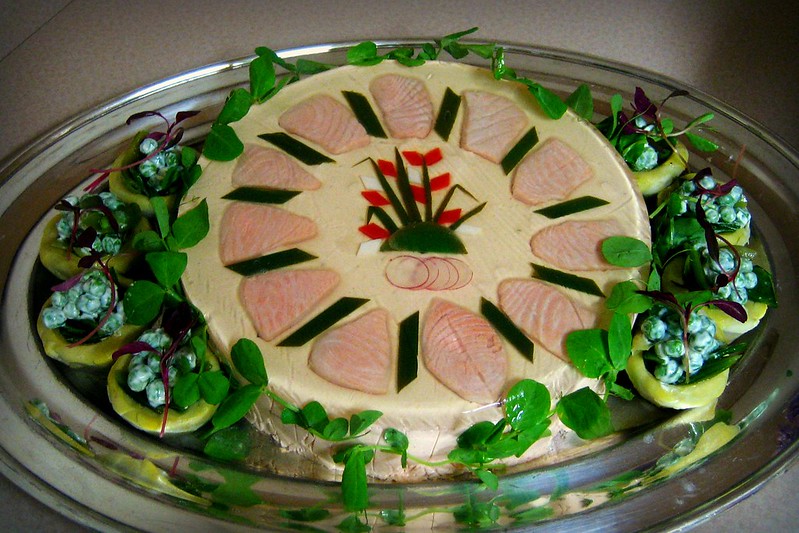
I am eternally grateful for Frank's particular flavor of tutelage and congratulate his remarkably quiet reign. Palena's untimely expiration is a legitimate bummer. That's life.
-
 41
41
-
Those excessively fatty cuts from heirloom lard pigs are gas lamp novelties in the fiber optic age. Most heritage breeds have disappeared during modernization, for good reason, because we have refrigeration (don't need to pack food in lard), non-stick pans (don't' need to fry in lard) and readily available cheap calories (don't need to supplement food with lard).
A fat pig is much different than a marbled pig. The best marbled hogs (8+ on a scale of 1-10) often get exported to Japan. All the other unmentionable bits go to china.
I was delivered an Old Spot Gloucester a few years back from a farmer who was very excited about breeding what he billed as an all but forgotten heritage breed. He was less enthusiastic when I told him that I wasn't in the business of making soap and that if his pig were an orange it would be 65-70% pith. I consulted with 2 PhD directors of animal science at U of Iowa pork study and they thought the following picture was photoshoped. Duroc and Berkshire are the most studied of the mainstream hogs but there are quite a few "Berkshire" on menus in DC that are actually white Yorkshires grown indoors in PA and have never seen the light of day other than the trip to slaughter. Top quality (marbling and color) pure bred (100%) Berkshires are very expensive and quite rare. The best I've seen (Craig Hagaman, High View Farm; Berryville VA) cost $5/lb ($1000 for the whole creature) and was absolutely flawless.
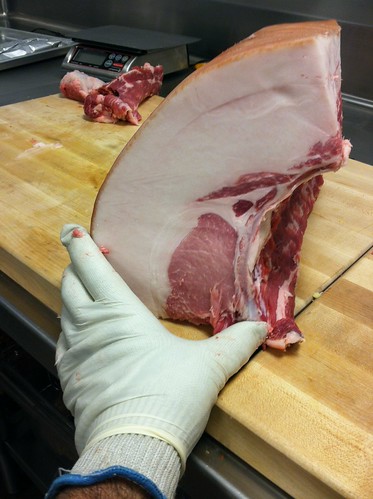
-
 9
9
-
-
Consider:
Gilles Verot (for cooked & cured sundries)
Le Fooding is a reliable guide by arrondissement, price, style, etc...
-
 1
1
-
-
My question is: assuming that you weren't able to X-ray the specimen, how did you manage to bone it without utterly destroying the flesh?
The best chef i'll ever know once told me that anything worth fucking up once is worth fucking up twice. The bone structure is the same for each fish. Youtube helps. Then it is a matter of dainty fingers, insufferable patience and delicate knifework.
Any chance this is available on Wednesday?
5 left. 5 smoked Chesapeake spotted sea trout with Meyer lemon as well.
-
 3
3
-
-
- Popular Post
- Popular Post
where was the shad from this early in the season?These came from Tar river North Carolina. I saw plenty of shad at Reading Terminal in late January, not sure where they came from. Provení§al culinary folklore makes charming, though disputed, claims that slow cooking the shad for 6-12 hours stuffed with sorrel (oxalic acid) and in brandy melts the bird's nest of 400+ tiny secondary bones (much like pickling softens herring bones) but the results were discouraging and left discomfort in the craw. The "y" shaped pin bones are as remarkable a choking hazard as they are irritatingly baffling.
One set of roe doesn't have a practical yield so the sacks were opened up, the eggs cured like caviar and used to baste the garnish. The flesh was picked through and fish cakes were made; a somewhat common practice in Virginia 50+ years ago when canned shad roe was still available and the shad still plentiful.
The second shad was butterflied through the stomach and entirely deboned. Deboning shad is an enterprise in another reality of fish butchering and the handful of old timers that still know how to do it cleanly and efficiently deserve a comfy repose somewhere between the Smithsonian's American History and Folk Art Department.
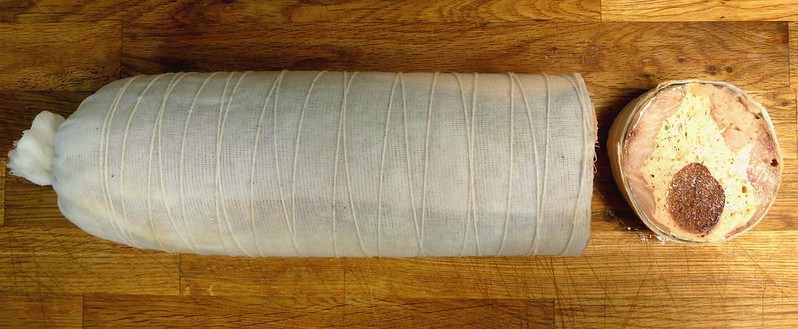
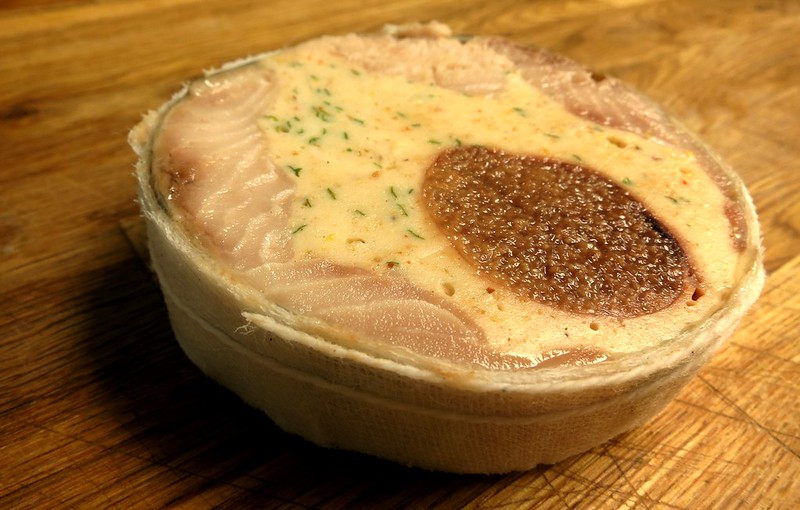
It was stuffed with the roe and a forcemeat of shad trimmings, scallops and sorrel which, without contact to the air or too high of a poaching temperature stayed green after cooking. It will be treated as a ballotine; seared in lard and served with cured pork belly and a sorrel sauce thickened with onions and rice.
-
 14
14
-
Veined rapa whelks from the Chesapeake are very hard to come by and the few fishermen that harvest them are seemingly reluctant to do so in intemperate weather. Most of the whelks come from New England, weather permitting, but only in 50# bags which is more than esoteric jaws can chew through before they loose their luster. In the interim we'd rather offer thriftier Mid-Atlantic watershed species such as flathead mullet.
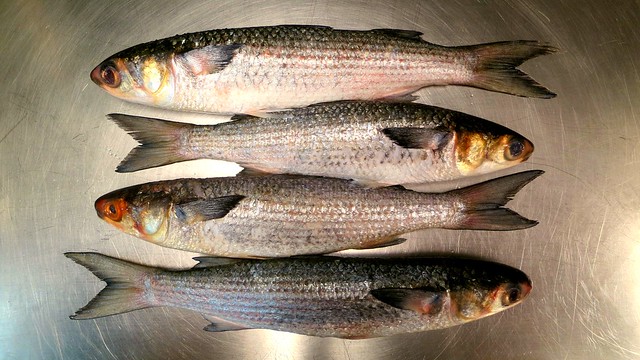
Mullets galore: Fried mullet, their roe, Carolina shrimp, pickled onion rings & cucumbers and J.O. mayo. $12
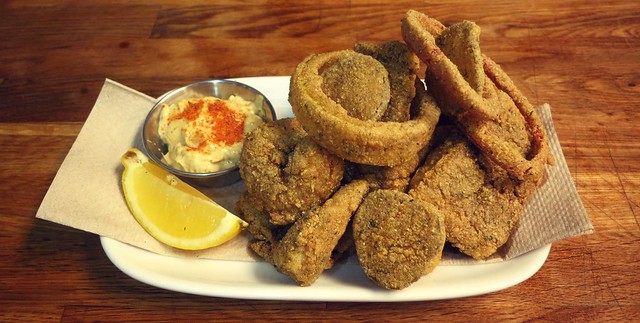
Or noodle with the harbinger of Washingtonian spring, American shad.
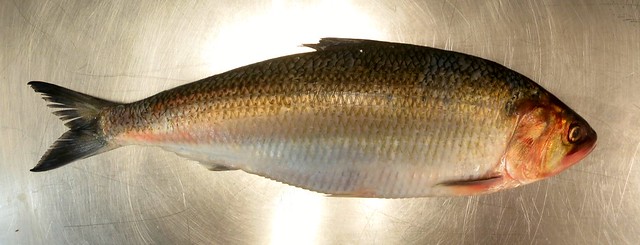
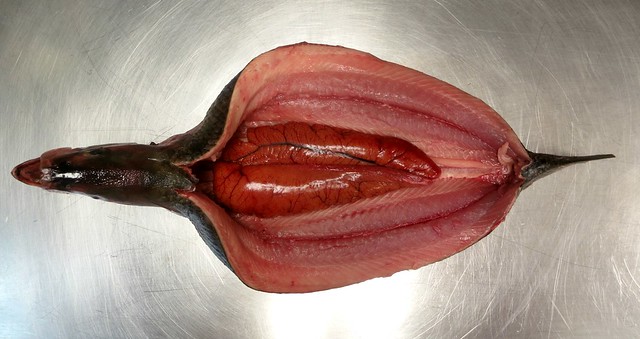
Stuffed with sorrel and baked 10hrs; basted with brandy.

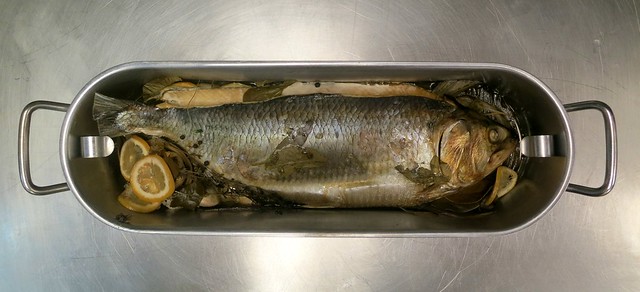
-
 8
8
-
-
The tables are based on repurposed prison workbenches from yesteryear that the owners saw on a trip through North Carolina. The shelf would force prisoners to keep their mischievous hands above the table so as to snuff out any distribution of contraband underneath, or in this case make room for the oyster platters.
Rapa whelks.
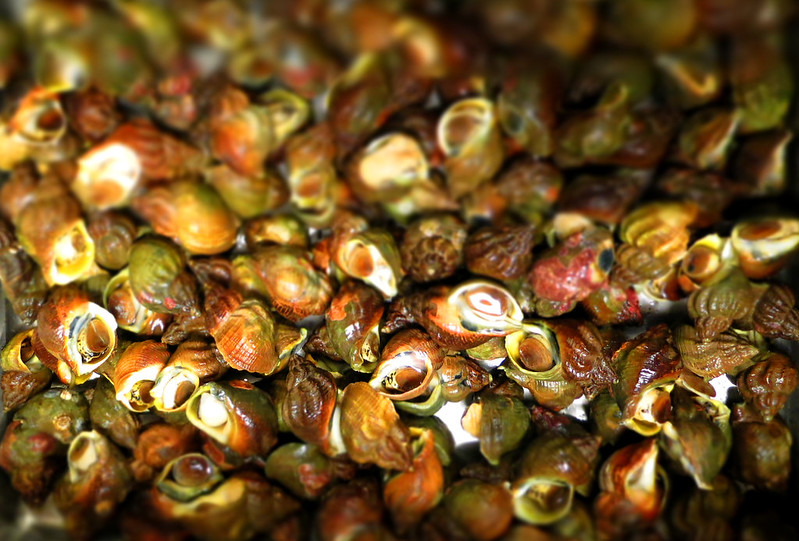
And a couple of stowaways.

Fish pies.
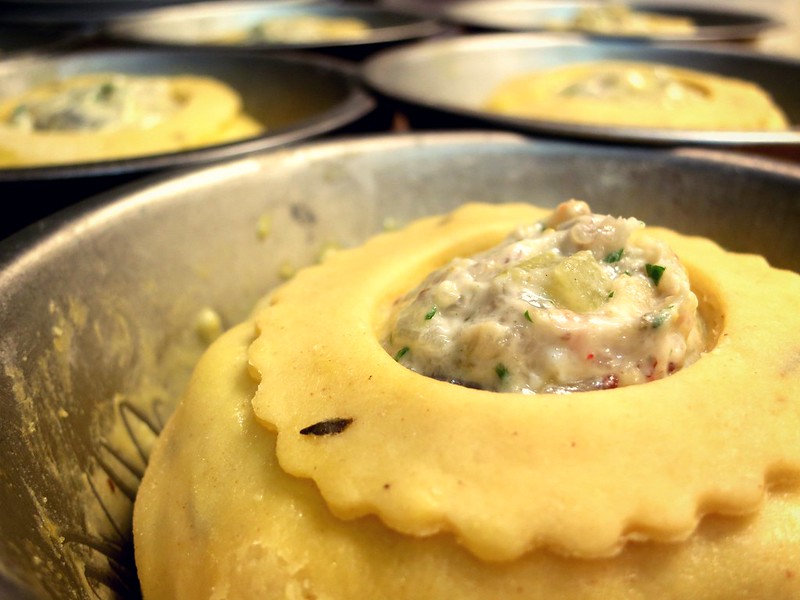
Baked to order, with pickles.
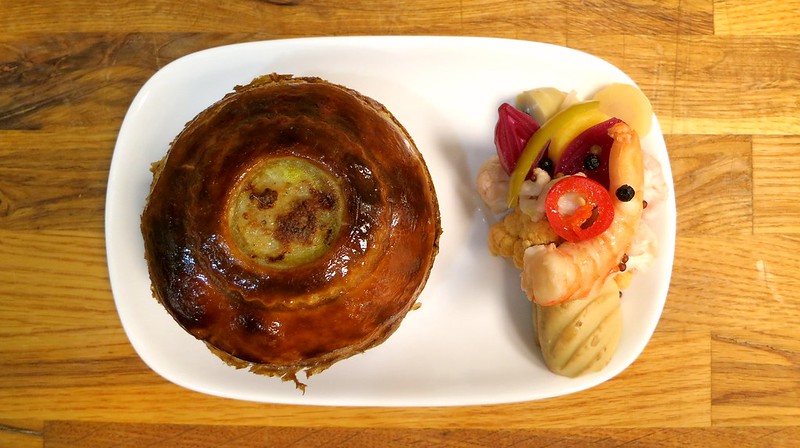
In addition to the aforementioned we have more copious items intended for sharing.
Pocket-book porgy for 2. $25
1.5lb Chesapeake bay porgy (sea bream) entirely deboned through the back and stuffed with root vegetables, toasted bread, Lewes cream and herbs. It has been kindly heralded as a maritime thanksgiving.

Super Roast for the table, $60.
The venison version (15oz Shaffer venison leg roast bound with my ventrèche, lamb shank simmer in black-eyed peas, 3 venison sausages flavored with rosemary, orange zest and juniper, 6 grilled oysters, some scarlet turnips and their greens) has been benched so that we can offer a bovine version comprised of a trussed 15oz top sirloin roast of Virginia beef, corned tongue, barley, beef cheeks simmered in Flying Dog's oyster stout, little onions and 6 grilled Rappahannock river oysters.
On Sundays there is a smaller all day brunch-flavored menu during which we propose a dozen items including Jansson's Temptation (Kennebec potatoes baked in cream with salted anchovies and caramelized onions $7), the waterman's remedy (shellfish consommé with seafood dumplings, poached shrimp and squid ink noodles $13), a soft boiled egg with a barely poached oyster and toast points, $6; and the revitalizing Grand Chesapeake Boil, $38. Olde Salt middleneck clams, whelks, scallops, head-on Carolina shrimp, squid, grilled swordfish, coddled eggs, cauliflower, new & blue potatoes, smoked pork sausage, grilled buckwheat sourdough bread and a mortar & pestle aïoli.
Grand Chesapeake Boil.
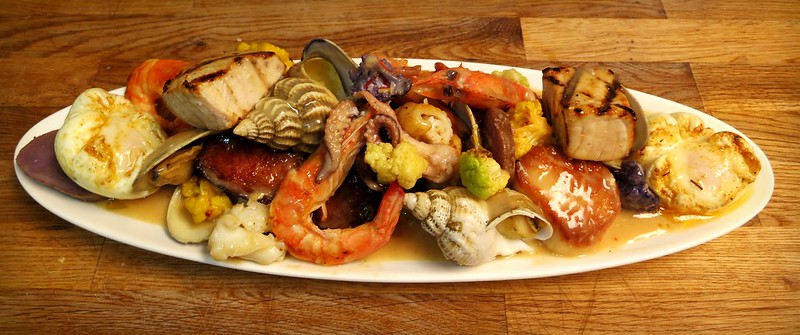
Leading up to New Years Eve we will have brandade with walnuts and walnut oil oysters, $10; Villeroy (Stingray oysters dipped in a horseradish and oyster juice gravy, breaded and deep fried) and our rollmops with pickled scallops and warm potatoes. $11. There is a moratorium on Chesapeake blueback herring so we are getting them fresh and whole from Maine before the majority go into lobster pots.
Butterflied delicately like anchovies.
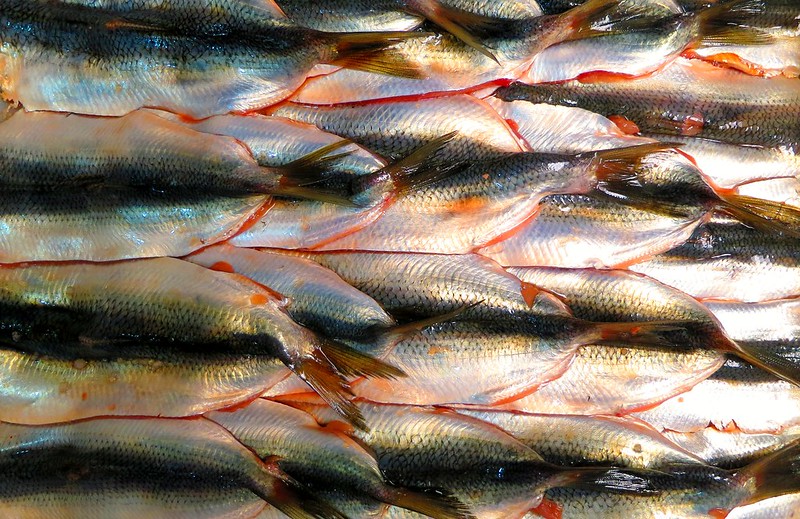
Overnight in coarse sea salt
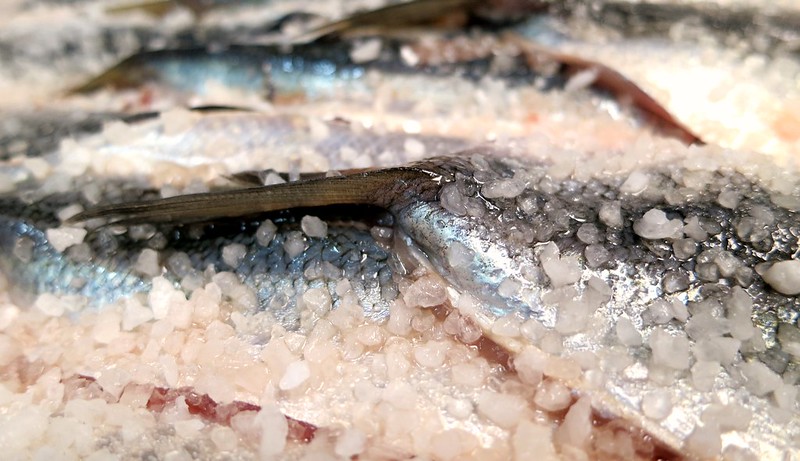
Cinched around a pickled cucumber with a skewer and cold pickled for a week with aromatics.
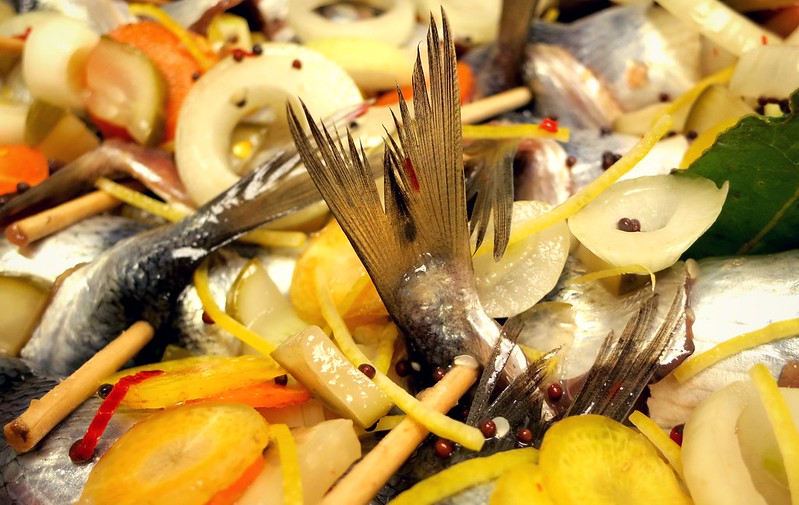
-
 6
6
-
-
Congratulations to Jean-Franí§ois Malle, 2013 Champion of the World Páté Croí»te Competition and all the other finalists. Truly exceptional craftsmanship, creativity, technique, discipline and still the high watermark of cookery.
Links:
Jean-Franí§ois Malle's formidable herring-bone work.
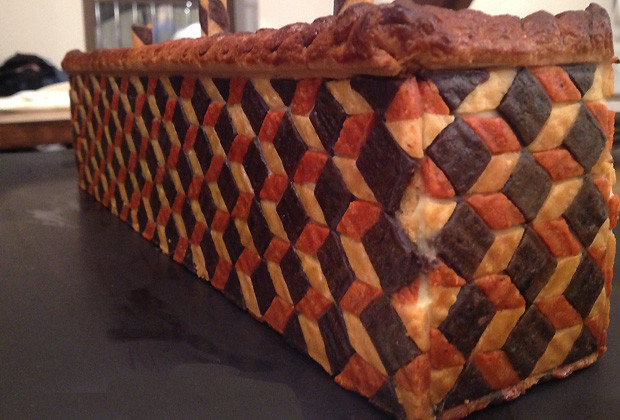
Well played sir.
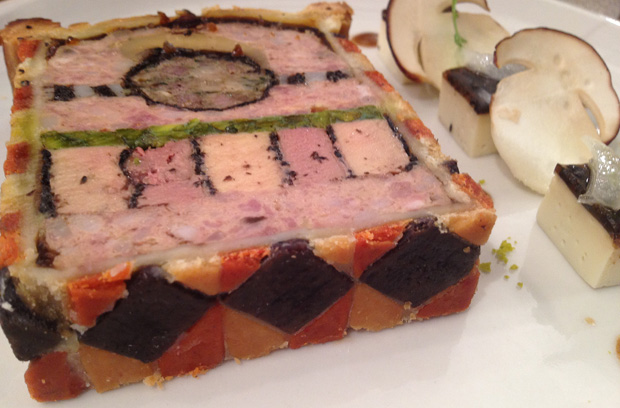



-
 1
1
-
-
Dressed fish pie.
Carolina black drum filets in savory pastry.
And a stuffing of scallops and Carolina shrimp.
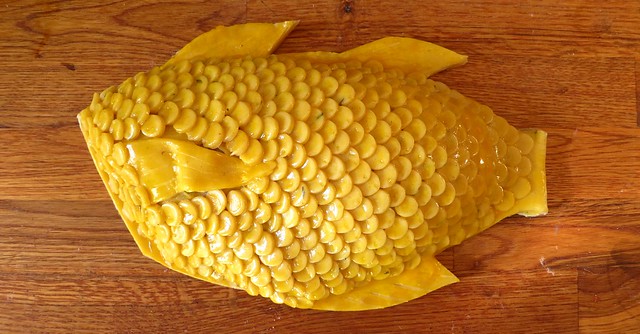

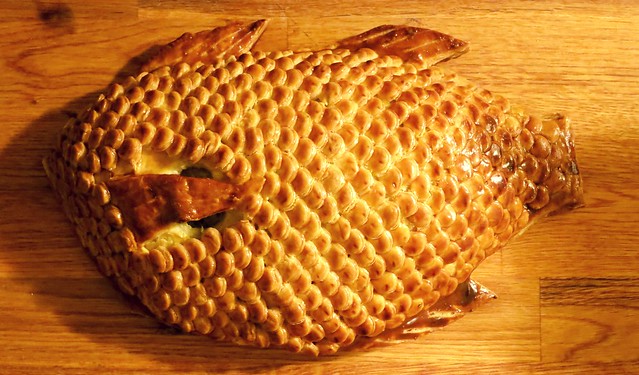
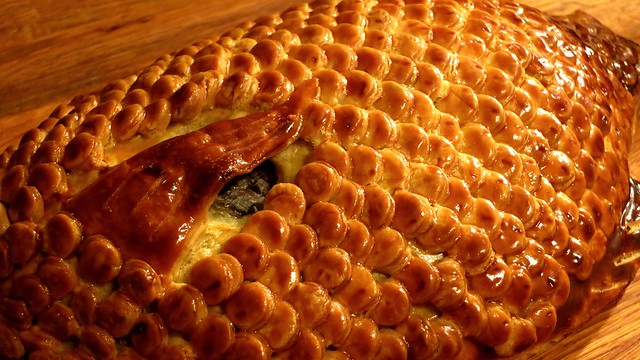
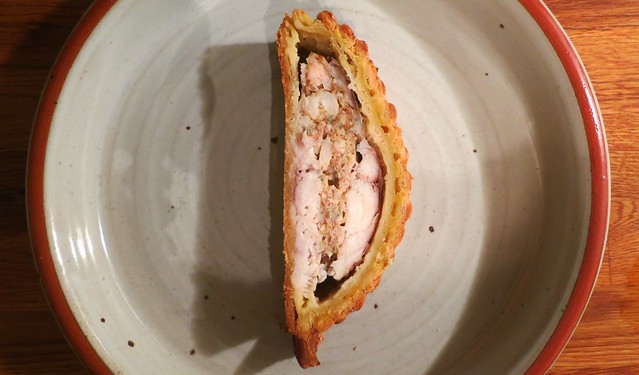
-
 6
6
-
-
Reaction, after three visits: The check can't come soon enough.
He had a considerable amount of time to chew on this tired, bitter "first bite" before firing the kill shot to the face.
PC is an unassuming venture from a well proven and admired restaurateur whose mission was to open a bar on a shoestring budget that would cater to the casual passersby of the neighborhood while staying below the fray of hipster destination diners with dancing servers, airbrushed ceilings, overpriced commodities and exaggerated birthday/critic compliments.
I'd gladly eat the haddock and potato cakes on a daily basis and choose to go there to support my community and neighbors. It is a fine place for a drink and eat for those who take pleasure in going down the street to a venue that is what it is and provides an alternative to the bars on Georgia Ave while not competing for the campy validation of a tenured stalwart.
-
Foraged implies wild, and unless it is on Nat Geo's Secret Lives of Predators, it's not really "wild".
-
While I agree that escargot may only be available from distributors as pre-cleaned then frozen or canned, I disagree that this is the case for all gastropods....for example, we acquired two different types of whelks in the past month that were flash frozen but not cleaned and still in their shell -- operculum and innards in tact -- and we prepare them by braising them in a seasoned liquid and serve them WHOLE, including the inner systems (with a toothpick to be cork screwed out of the shell).
Same could be said for sazae or larger snails we have access to as well as abalone and sea slugs (namako).
I also recently had snails in coconut milk at Rice Paper that were still in shell. Their kitchen conveniently lopped the very top of the shell off so you could suck out the meat from the top (vs twisting it out from the foot). I doubt these arrived pre-cleaned, separated, and all inner systems and foot restuffed at the restaurant.
Domestic whelks and abalone are available live and in their shell; I haven't said otherwise. It is illegal in the US to contain conch in their shells (listed in appendix II of CITES); most of the conch meat comes from the Caribbean. I prefer to be able to purge whelks (much like razor clams) to remove the grit, sand or whatever its last meal was, just like de-veining shrimp. That is not possible with frozen whelks and they may not have been purged. I haven't had to purge abalone but always discard the guts. Gastropod innards (or those from most any other sea creature) is not a flavor or texture that I crave.
-
Even whelks.
Especially the larger ones. In smaller whelks the intestines and whatnot often get stuck in the shell and the foot detaches from it when you pick them. In the bigger ones everything comes out. The guts are pulled off and, ideally, the foot is split and the "mouth" is removed. In either case the operculum (trap door) is removed, probably in the kitchen before they get to you.
(I'll be serving Chesapeake Rapa whelks at ETR)
-
Escargots ($14) was right at the price where you weren't sure if they were frozen or not. Although these were served in shells - a beautiful, dramatic presentation - unfortunately, they weren't the shells in which the snails were born; they were just empty shells, purchased separately, and used as a serving vessel. The snails were inserted along with parsley and butter, and honestly, I couldn't tell if they were frozen or not (frozen is not necessarily bad, and you can still have frozen, but wild-caught, escargots). Something tells me these weren't crawling around in the flower boxes earlier in the day.
No gastropod (snail, conch, whelk, abalone) is ever served directly in the shell that it comes from (with the exception of periwinkles that are so small). If they did, you would not be pleased. At all. All the intestines and organs and hermaphroditic junk have to be removed from the business end of the creature. The foot is the only edible part. The snail is pulled out of the shell, cleaned, and then put back in. It is more efficient to pull them all out at once, clean them all and return them to a shell, which is probably not the original, maybe even broken if they aren't old enough, but close enough.
It is illegal to import live snails (which qualify as plant pests) without the Plant Protection and Quarantine Division's rubber stamp since they pose a threat to crops. They can not be released into the wild and may not be the edible variety anyway. And also, let's not forget--let's not forget, dude, that importing, an amphibious gastropod for, um, you know, domestic consumption--within the country--that ain't legal either. Those canned snails imported from France are likely gypsy imposters who were moping through the hill of Romania.
Wild snails (generally giant African land snails) have been known to host Angiostrongyliasis which can cause meningitis if they are not cooked which makes the handful of folks who even know that a little gun-shy when it comes to eating wild snails.
There was a snail farmer in the southwest up until 5 or 6 years ago that sold live snails but they packed up their dirt and retired. Most live snails are raised in California and a NYTimes article profiled Mary Stewart last year, who sells them through a Seattle based distributor. Somewhere along the way they are cooked. It is quite clear from the article that the snails are raised on a "farm", but the distributor claims they are "wild", a greenwashing term that is carelessly thrown around nowadays like a Frisbee.
The amount of time, refrigeration space and work required to purge, cook and clean the critters is not something that every restaurant can manage and there are far worse-quality commodity land animals being served to consumers than snails with optional shells.
-
 2
2
-
-
Lobster is pretty cheap if you compare it to meat and poultry at farmer's market prices.
Not when you compare the yield. And then there is hard shell vs soft shell.
Chefs respond to annual "cheap lobster" stories saying no one talks quality
SEAFOOD.COM NEWS [ABC - Good Morning America] By Joanna Prisco - August 22, 2013 -
A New Yorker article on the cost of lobster caused a stir among seafood lovers and skeptical diners this week, positing that restaurant prices do not reflect the current glut of crustaceans -- now selling for as low as $2.20 off the boat in Maine -- but the implied prestige of eating them.
Several vocal chefs have defended their prices, however, saying there are myriad reasons for the markups.
Whether the cost of transport, cooking labor or the type of lobster, the combined price of what appears on your plate is more complicated than boat hauls and psychological associations, said New York City chef Marco Canora (Hearth, Terroir Wine Bar) who fired off a fuming tweet earlier this week in response to the media flurry.
"Here we go again: annual 'cheap lobster' article is out and once again no talk of Hard vs. Soft shell lobsters #makesnosense," he wrote.
During the late summer, Maine lobsters molt their hard shells by dropping some weight and wiggling out. The creatures then begin to create a new shell in a much larger size, filling the gap between their bodies and their soft-shell exterior with water as they continue to grow. This can be misleading when it comes time to purchase.
"The weight is there [because of the water], but you yield less meat from it," said Canora. "Every year, this kind of article comes out and every year no one talks about it."
The reduced meat per shell means restaurants have to order just as much, if not more, to continue preparing dishes like lobster rolls, lobster bisque or lobster mac 'n' cheese, some chefs have attested.
Alternatively, however, buyers can still source lobsters from further north, where they aren't shedding their shells yet.
"[The media] try to make it sound like restaurants are ripping people off," said Canora. "The fact of the matter is, when I call my guy for lobster I make sure I'm getting a hard shell, because I'm not going to charge $38 for a whole lobster entree and then have you crack open a claw for a piece of meat the size of your thumb."
Susan Povich, founder of Red Hook Lobster Pound in Brooklyn, N.Y., and the supplier for its Washington, D.C., offshoot, told ABC News that, in contrast to the reports of a glut, her own costs have gone up over the last few years.
"I have fresh-picked meat sent down to me from Maine," said Povich, who uses the pre-picked flesh in her popular rolls. "I only use the claw and knuckle because I personally feel it's the best part of the lobster. In the past, it was subsidized because the cost of tails was so expensive. But over the last few years it has become more popular and the cost has increased by 30 percent."
Povich also transports whole lobsters down from Maine, which carries its own financial risk.
"I lose 20 percent of my soft-shell lobsters when they travel because they die; they're too fragile for all of them to make the trip," she said.
Povich is currently selling whole soft-shell lobsters for $6 to $7 per pound and hard-shell lobsters for $11 to $12 per pound.
In addition to the price differences, many attest that the type of lobster shell influences the taste of the meat. Soft-shell lobsters tend to be a little more tender and a little sweeter than their hard-shell cousins, according to most chefs. Meanwhile, hard-shell lobsters are often lauded for their brininess, salinity and oceanic flavor. Both have their attributes, but the hard-shells are not as forgiving of novice home cooks.
To determine whether an unlabeled lobster is a hard-shell or a soft-shell, ask your local seafood purveyor to take it out of the case to feel for yourself. A squeeze will give you a sense of how much meat is inside and the toughness of the shell, said Canora.
Sam Talbot, a native of North Carolina and a "Top Chef" alum, offered other visual cues for choosing a choice crustacean: The tail should be strong and naturally curl under the belly when you pick it up. They should also look alert.
"If it's half dead, it will taste half dead," he said.
That is, unless you buy into the argument that a lobster's taste depends upon its price.
-
Eat the Rich, a new oyster bar in Shaw, is seeking fulltime line cooks to be part of our team. We are a Bay-centric bar serving local oysters and seafood lead by Derek Brown, of The Passenger, Columbia Room and Mockingbird Hill, and Travis Croxton of Rappahannock River Oysters. We want hardworking, passionate cooks who enjoy learning and working with a mission. Send resumes or inquiries to derek@laughingcocktail.com.13.50/hr, benefits after a year.
-
What are the nutritional facts on the "tastings of hams, terrines, and pates" at Range? Or the "veal sweetbreads, country ham, chanterelle?" I'd be willing to bet they're pretty high on the calorie, fat, and sodium counts.
I'm no big fan of chains, but I'm also no big fan of the commonly held misconception that eat at an independent equates to eating more healthily.
Cured meats and offal are excessive on their own by virtue of their raw physiology, the not-so-cheap ingredients and the salt needed to process them. They aren't really meant to be center of the plate sustenance. Only an unhinged glutton with bloated coffers and a gout fetish would make a complete meal of salted ham, terrines, pátés (for 4 people).
Pork belly rillettes (100g portion)
Calories 508
Total Fat 53g (19 saturated, 25g monounsaturated)
Sodium 470mg
Hams (30g portion each)
Calories 60g
fat 3g (1g saturated, 2g monounsaturated)
Sodium 500mg
Garlic pork sausage (100g portion)
Calories 230
Fat 16g (5g saturated, 7.8g monounsaturated)
Sodium 642mg
Páté en Croí»te (120g portion)
Calories 404
Fat 24g (5g saturated, 5g monounsaturated)
Sodium 580mg
Sweetbread (4oz portion with 1oz country ham)
Calories 320
Fat 9g (11g saturated, 12g monosaturated)
Sodium 530mg
By comparison, the nutritional values of any 3 of the above combined have better nutrition than most of what is served at the chains and is likely the case with a majority of independent restaurants profiled in this forum. That, I am willing to wager.
-
 1
1
-
-
What a scoop. Little to no consideration though for the absolutely fundamental foundation of chain restaurants and their stock in trade: nutritional sustenance from food to the masses. (Weight Watcher approved grilled red herring notwithstanding). In a time where helmets and seat-belts are mandated, these entities are the premier self-inflicted scourges of humanity.
The $12.69 Applebees appetizer sampler has 2300 essential calories, 150g fat, 45g of saturated fat and a prodigious 6000mg of salt. Might as well have asbestos, lead, tobacco and bareback promiscuity options. On the plus side, the chains have enough purchasing power to provide free bread and some are cheeky enough to put salt shakers on the table.
-
 1
1
-
-
..."It all starts with farm-grown potatoes -"
That's greenwashing, which, aside from being trite, is deliberately misleading, flirts with fraud and is consistent with much of the deceptive labeling that plagues this nation's food culture. Like Clyde's "grass-fed" hamburgers, which are nothing more than grain-finished steers, like 97.5% of all other beef out there, suckers.
-
Jambon sec.
Dry cured 100% Berkshire ham.
Fortnight box-car sea-salt slumber.
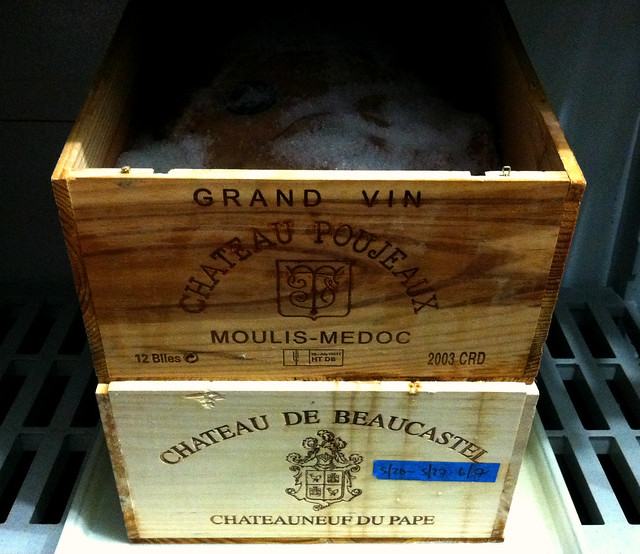
Rinse & break the knuckle.
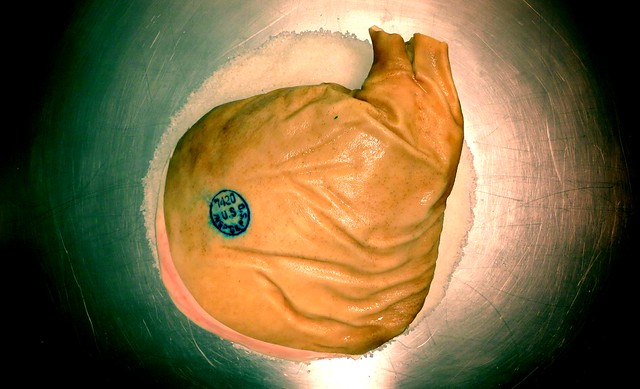
Hibernation primer coat of lard and ground spices.
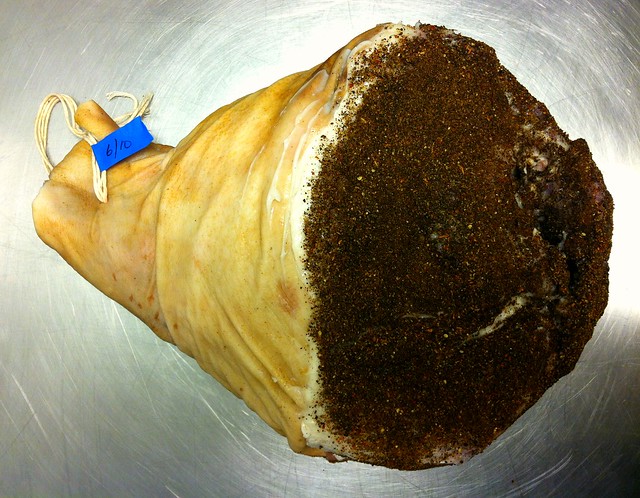
-
 1
1
-




Vaucluse, Provence -- Peter Mayle Country
in The Intrepid Traveler
Posted
Next time you find yourself in the area, get a copy of Robert Louis Stevenson's Travels with a Donkey in the Cevennes and go 30 miles northwest to pick up his trail from the end. Its a craggy part of the Languedoc-Roussillon where sheep and goats outnumber both the Huguenots (reformed protestants, the Musée de Désert is their Smithsonian) and Catholics, who, up until the time electricity arrived -which is to say around the time many of the men left for the second war and the population continued to dwindle- segregated themselves, keeping to their upper/lower parts of town like in Florac, the Lozère sub-prefecture town of barely 3,000.
I spent every summer there up until college in a village of 60 people a mile down the road called "La Salle Prunet" (the plum-tree yard). Once a year in August, for the "plum festival", the bread oven was fired up and greengage plums were given to each household so they can make pies, tarts and pastries to be baked inside. Afterwards, stuffed tomatoes, potatoes boulangère, zucchini & eggplant gratin and other savories assembled from each house's potager would gently bake throughout the evening in the waning residual heat. The smell of that, and the embers, fosters a formidable appetite.
Chestnuts (and the smaller marrons) and goat's milk pelardons rule the pantries, the former roasted, soaked in brandy, confit, as a jam, dessert, in custard (coupetado), savory purée and the latter is enjoyed throughout the country in various degrees of ageing (for the older ones, they are said to be perfect when the punchy smell kills the hovering flies) and acquired AOC status in 2000.
Elsewhere in the Cevennes, the protestants built dwellings out of granite and schist, for which chestnut trees have a particular affinity while the Catholics further in the Gorges du Tarn used limestone and the architects were sure footed funambulists, like at Castelbouc, perched above the river's edge, naturally.
As per the ribald tale, all the men of the village had left to fight in the crusades leaving Lord Castelbouc to selflessly satisfy the lonely lasses all by his self. Exhausted, he died from his capricious efforts and the ghost of a buck is said to have risen and flown over the castle, its namesake. The Catholics destroyed it in 1592 so that it would not be used as a haven for those heathen protestants. Ste. Enimie further down Les Gorges is a Medieval village anyone can fawn over. Word on the street is that Enimie pleaded the good lord to help her rebuff her suitors. He gave her leprosy, thrice.
Then there is Malbosc; a hamlet that clings to the cleavage of a perky valley below the menhir fields of Les Bondon and the sound of the rustle of leaves and stream and occasional goat's bell below is just right.
Daniel Castel makes the finest pottery around. The most gracious of hosts, friend of 20 years and a rare artisan of the highest order who spins 7,000 pieces a month by hand and builds his kilns. The pottery "sings" after a day's bake.
On the flight east, fly Lufthansa, and don't be bashful about kindly asking to be upgraded to the superior class if the plane is packed . Despite the reputation of towing a strict line of regulations, the Germans are very apologetic and happy to please.